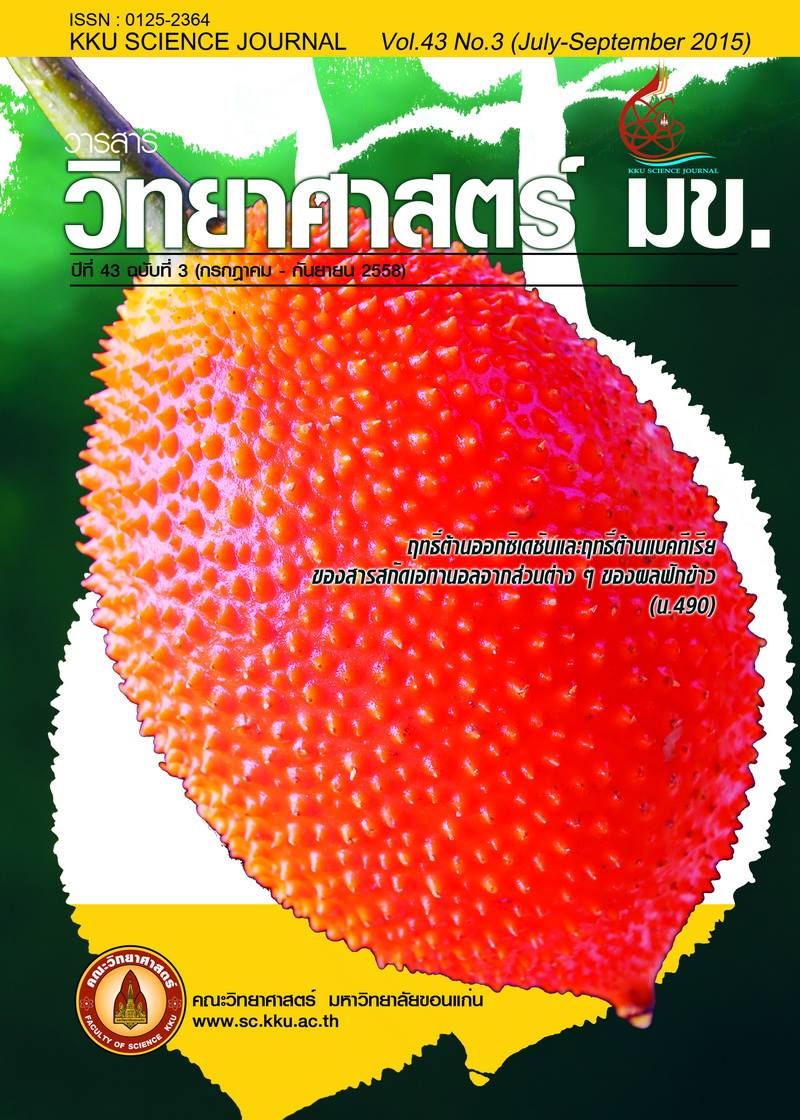Efficiency of Carbon Dioxide Adsorption between Green Urban Area and Green Rural Area
Main Article Content
Abstract
The objective of the study was carbon dioxide absorption efficiency of green areas by using carbon dioxide concentration and its movement. The measurement was in a unit of concentration per unit area per unit of time, eddy covariance technique with 3D sonic
anemometer. Averaged ambient carbon dioxide concentrations measured at green rural area (mangrove forest of Laem Phak Bia Environmental Research and Development Project, Phetchaburi Province) was 2.41 mg/m3 and green urban area (Benjasiri Park, Bangkok) was 4.82 mg/m3. Criteria for considering carbon dioxide absorption efficiency were 1) carbon dioxide flux (concentration of carbon dioxide which moved per unit area and per unit of time) and 2) frequency of downward vertical movement (Z axis) which were negative values in daytime. Because plant’s photosynthesis process needs carbon dioxide. It was found that green rural area
gave the highest CO2 Flux -0.06 mg/(m2s) and the downward vertical movement frequency was 25%. The secondly was green urban area -0.02 mg/(m2s) with the frequency of was 41.7 %. Considering the frequency in rural green area was lower 50% but the downward carbon dioxide volume in the green rural area was higher than the urban green area caused the higher carbon dioxide absorption efficiency.
Article Details

This work is licensed under a Creative Commons Attribution-NonCommercial-NoDerivatives 4.0 International License.


